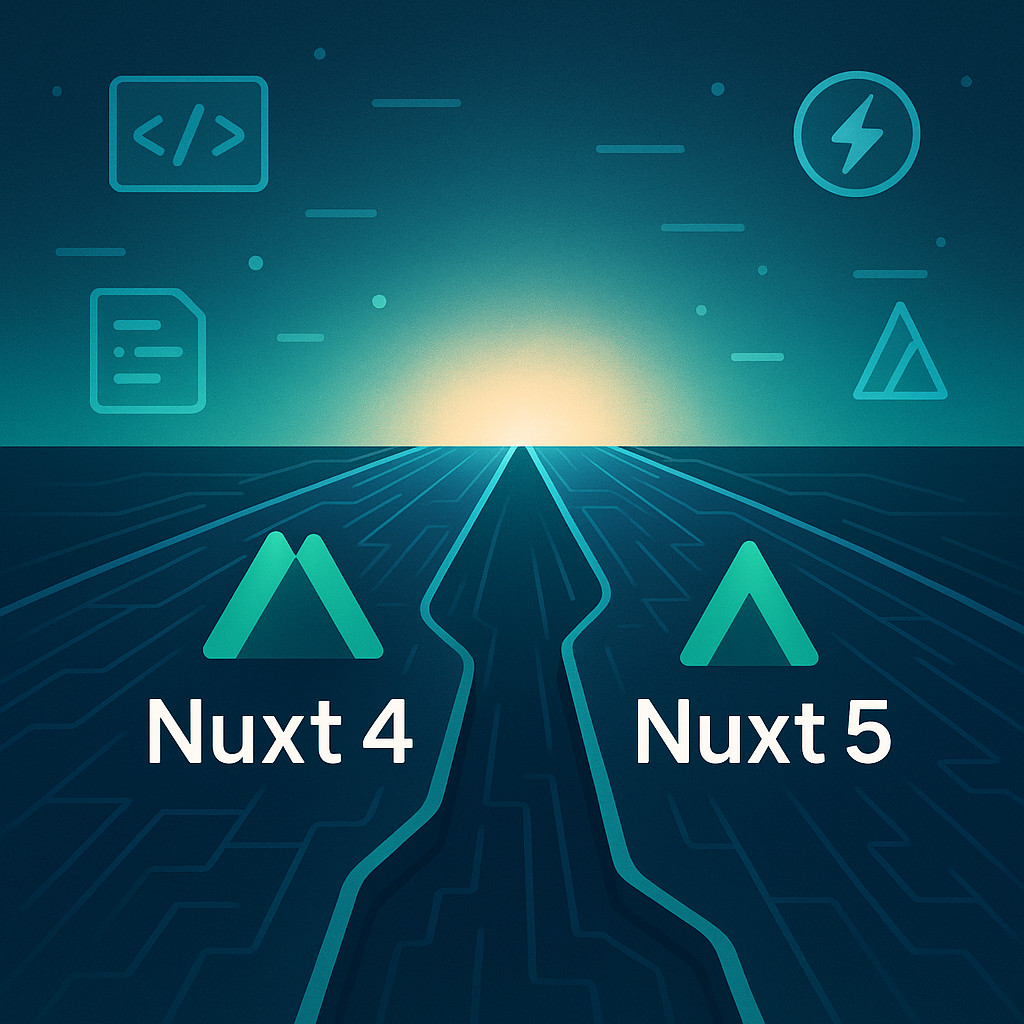Last month, the Nuxt ecosystem dropped a major announcement: not one, but two big version bumps are on the way. In a compelling DejaVue episode, Daniel Roe (Nuxt lead) revealed what's coming next—Nuxt 4 followed closely by Nuxt 5
🚀 Why Two Major Versions?
-
Nuxt 4 tackles urgent tasks: aligning dependencies, smoothing migration, and setting a clear LTS path for the next year.
-
Nuxt 5 will arrive later, featuring major internal overhauls—Nitro 3 integration, powerful Vite enhancements, and broader framework cohesion.
🗓️ Timeline & Strategy
Per the roadmap, Nuxt 4 should drop within weeks—it’s late June 2025. Nuxt 5, built on that momentum, follows next year. The vision? A regular annual release cadence with more predictable upgrade paths.
🛠️ Migration & Compatibility
-
Early adopters using the
compatibilityVersion: 4report smooth transitions. Only a few breaking changes were surfaced, and they're well documented. -
Nuxt 4 raises the bar: requires newer Node.js versions, refined config architecture, and revamped module support. But these changes are deliberate and scoped to minimise disruption.
🔧 What’s New in Nitro 3
-
Nitro 3—a powerful build-agnostic server layer—isn’t included in Nuxt 4. That integration lands in Nuxt 5.
-
Nitro is becoming the backbone for many frameworks; bringing it into core delivers better deployment flexibility and performance.
📚 Official Resources
-
Nuxt 4 migration guide: clear steps to upgrade existing projects
-
DejaVue podcast episode featuring Daniel Roe with extensive insights and timelines
✅ Key Takeaways
-
Nuxt 4 is about cleaning house—quicker release, clear compatibility, and minimal but meaningful changes.
-
Nuxt 5 brings the next generation: full Nitro 3 support, enhanced Vite integration, and refreshed code architecture.
-
The Nuxt team is shifting toward a yearly major release cycle, increasing predictability for developers.
-
Existing projects should prepare by using the compatibility settings, testing against the alpha/beta builds, and following the migration docs.
💡 Tips for Developers
-
Evaluate your current Nuxt version and enable the compatibility flag to preview upgrades.
-
Follow official migration documentation and test third-party modules for compatibility.
-
Prepare your CI/CD pipelines—update Node.js versions and tweak build scripts ahead of time.
-
Join the Nuxt community on GitHub and Discord to stay ahead with alpha releases and best practices.
📝 Conclusion
This "double release" strategy shows Nuxt’s maturity and commitment to developer experience. Developers get a predictable, feature-managed path to new versions, with stability in the short term and innovation in the long run. Buckle up—big things are on the Nuxt horizon!



